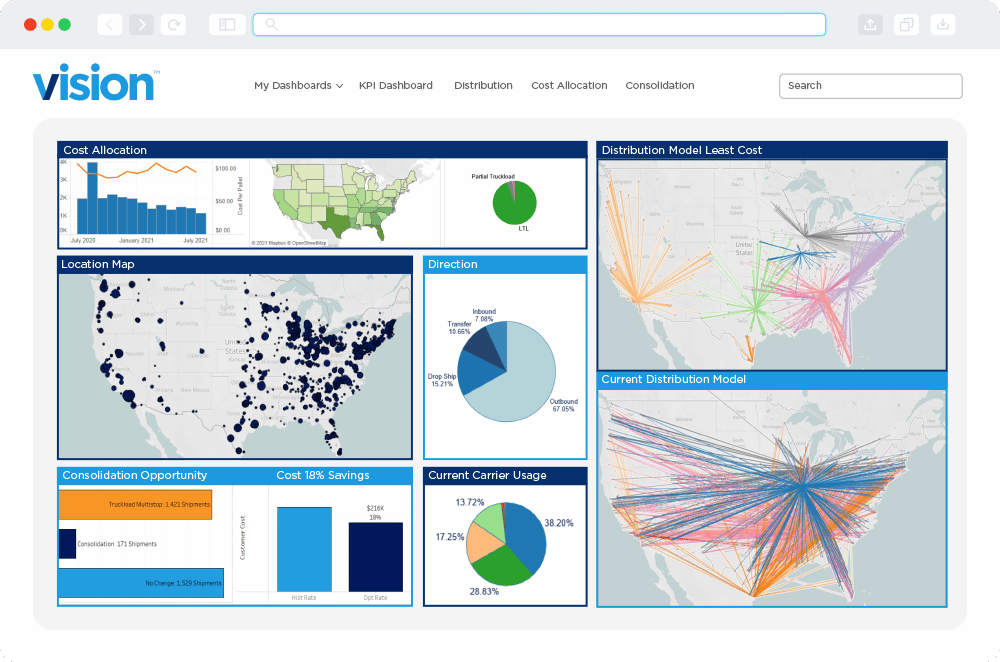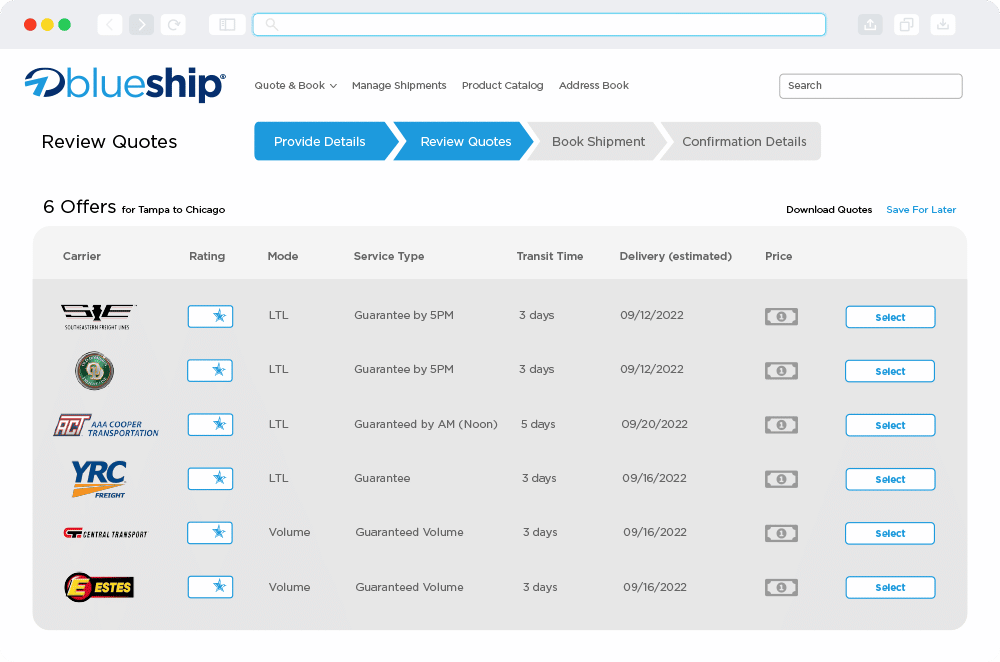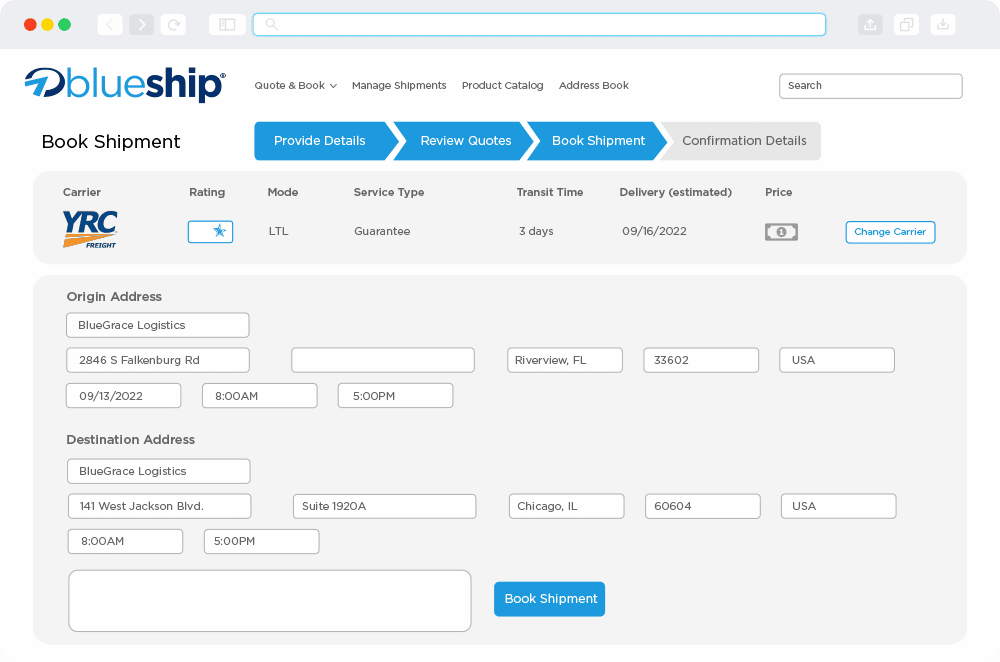
What is Freight Class and How Do You Determine It?

Freight shipping plays a pivotal role in our society, impacting the economy and access to goods. In the United States, the freight transportation industry is massive and continues to experience growth year after year. To ensure the seamless movement of goods, it’s important that freight shippers and logistics professionals understand the complexities of this industry. A major piece of this process involves freight shipping class.
Freight class is a standardized method for classifying less-than-truckload (LTL) freight shipments using characteristics such as density, liability, handling, value, and several other measurable values. Accurately understanding and assigning the correct class, shippers can make sure their goods are transported safely and cost-effectively.
In this post, we’ll dive deep into freight class, covering everything you need to know. You’ll learn how to determine it, what factors affect that determination, and we’ll share helpful tips and tools to assist logistics industry professionals with this important process.
Maximize Your Budget: Download The LTL Toolkit Today!
What is Freight Class?
Freight class is a standardized measurement or classification system that categorizes shipments based on their characteristics, including, weight, dimensions, density, stowability, and handling requirements. The National Motor Freight Traffic Association (NMFTA) established the National Motor Freight Classification (NMFC) system, which is widely used throughout the U.S. shipping industry. Freight class primarily applies to less-than-truckload (LTL) shipments. LTL shipments are when a single client’s shipments do not fill an entire container and are consolidated alongside other clients’ goods. Freight classes hold immense significance in the shipping industry as they establish a standardized pricing framework for shipments.
The NMFTA has defined eighteen distinct freight classes. These classes are based on weight, length, height, ease of handling, density, value, liability, breakability, and spoilage. Lower classification numbers result in lower freight costs. Logistics professionals must have a good understanding of freight class as it directly impacts budgeting and cost analysis. Many other aspects of the shipping process are also affected, including space utilization, carrier selections, and overall shipping efficiency.
Understanding how to classify freight equips logistics industry professionals with the ability to make well-informed decisions to help optimize their organization’s shipping process.
Factors That Influence Freight Class
The standard for classifying freight for less than truckload (LTL) shipping is based on several factors: density, stowability, handling, and liability. Using these designated factors, shipments are grouped into eighteen categories, or freight classes ranging from 50 to 500.
Weight and Density
In the shipping industry, density is defined as occupied space in relation to weight. In other words, weight per cubic foot. Often lighter items are more fragile. Therefore, lighter shipments tend to have a higher freight class rating, while heavier loads tend to have a lower-class rating.
For example, which weighs more: 100 lbs. of bricks or 100 lbs. of ping pong balls? 100 lbs. of bricks is a Class 55 versus 100 lbs. of ping pong balls is a Class 500. The bricks may weigh more, but the ping pong balls occupy more space.
Stowability
Stowability refers to the difficulty level involved with storing shipments. Government regulations or specific carrier policies impact the ease of stability. For example, some freight types, like hazardous materials, are restricted from being loaded with other freight. Freight class ratings quantify stability reflecting how easy or difficult a shipment is to handle. Items that are difficult to load will be assigned a higher freight class increasing shipping costs.
Packaging and Handling
Similar to stability, handling ratings involve determining a shipment’s ease or difficulty level. Packaging affects this rating because shipments requiring special packaging may be fragile, requiring special handling, or awkwardly shaped, making the shipment difficult to load. Freight that is challenging to handle will result in a higher freight class.
Liability
Liability involves the probability of goods being stolen, damaged, or damaging other goods during shipping. Freight with increased liability includes combustible materials, perishable items, or high-value freight.
Freight Class Chart
There are 18 different freight classifications, ranging from 50 (low) to 500 (high). Typically, the lower the number, the lower the shipping cost.
Freight class code | Type of freight | Weight per cubic ft |
50 | Durable freight that fits on a standard 4' × 4' pallet | 50+ lbs. |
55 | Bricks, cement, hardwood flooring, construction materials | 35–50 lbs. |
60 | Car accessories, car parts | 30–35 lbs. |
65 | Car accessories and parts, boxed books, bottled drinks | 22.5–30 lbs. |
70 | Car accessories and parts, auto engines, food items | 15–22.5 lbs. |
77.5 | Tires, bathroom fixtures | 13.5–15 lbs. |
85 | Crated machinery, cast iron stoves | 12–13.5 lbs. |
92.5 | Computers, monitors, refrigerators | 10.5–12 lbs. |
100 | Car covers, canvas, boat covers, wine cases, caskets | 9–10.5 lbs. |
110 | Cabinets, framed art, table saws | 8–9 lbs. |
125 | Small home appliances | 7–8 lbs. |
150 | Auto sheet metal, bookcases | 6–7 lbs. |
175 | Clothing, couches, stuffed furniture | 5–6 lbs. |
200 | Sheet metal parts, aluminum tables, packaged mattresses, aircraft parts | 4–5 lbs. |
250 | Mattresses and box springs, plasma TVs, bamboo furniture | 3–4 lbs. |
300 | Model boats, assembled chairs, tables, wood cabinets | 2–3 lbs. |
400 | Light fixtures | 1–2 lbs. |
500 | Gold dust, ping pong balls | <1 lb. |
How Do You Determine Your Freight Class?
In addition to understanding what freight class is and how it impacts freight shipping, it is important to know how to determine the freight class for each shipment. Incorrect classification can be a costly mistake; by following a specific process to determine the class of each shipment helps improve accuracy and consistency when estimating freight costs.
Freight Class Calculation: Step-by-Step Process
- Weight: Weigh your freight using an accurately calibrated NTEP-certified floor or forklift scale. Make sure to include the pallet and packaging in this number and ensure the number is in pounds. This weight will be used when calculating a shipment’s density.
- Measurements: Measure the widest, longest, and highest points of the shipment, including any protrusions and overhang. A standard pallet is 48 inches in length and 40 inches in width.
- Density: Density is vital in determining the classification of freight. Calculating shipment density involves a few steps:
- Cubic feet: multiply your freight’s length, width, and height, then divide by 1728. There are 1,728 cubic inches in a cubic foot. It should look like this: (L x W x H)/1728 = cubic feet
- Calculate Density: divide the weight of your shipment by the total cubic feet. Weight of shipment/cubic feet = Density
- Assign Freight Class: Using the NMFTA class-based grading system, choose one of the eighteen classes from 50 – 500. Classes are determined by weight per cubic foot or the density of each shipment; however, other aspects of the shipment factor into the accurate assignment of a freight class—for example, value, stowability, handling, and liability. Using an official classification book with National Motor Freight Classification codes is important to ensure proper freight class.
Importance of Accurate Freight Class Determination
Assigning the correct freight class is important for several reasons:
- Cost Efficiency: Accurate classification ensures that you are charged the appropriate shipping rates based on the nature of your shipment. Overestimating or underestimating the class can lead to unnecessary expenses or unexpected additional fees.
- Shipping Compliance: Complying with regulations helps you avoid reclassification, shipment delays, and potential penalties. Proper classification ensures adherence to carrier requirements and industry standards.
- Carrier Relationships: Providing accurate class information builds trust with carriers and promotes smoother logistics operations. Consistently providing precise assignments helps maintain strong partnerships and fosters reliable shipping services.
Tips and Best Practices
Optimizing Packaging and Dimensions
Packaging and materials selection can affect overall shipping costs. A best practice for pallet shipping is to efficiently package goods using the appropriately sized containers. Shipping goods in larger-than-necessary containers can impact classification since calculations consider both dimensions and weight.
Communicate with Freight Brokers and Carriers
Working with carriers and freight brokers (or a 3PL) can help minimize discrepancies in freight classifications. Establishing good relationships with everyone involved in the shipping process will benefit all stakeholders by creating streamlined, efficient shipping operations free from costly mistakes.
Technology and Software Tools
Utilizing technology and software tools to help ensure accuracy and reduce human error can positively impact shipping operations. For example, transportation management systems can help plan and execute freight transit processes. Other tools include the NMFC codes list, freight class calculator tools, and other cloud-based logistics software solutions.
Resources and Tools for Freight Class
Online tools and resources can assist with freight class determination. Utilizing online resources and reference materials is important for staying current on freight industry regulations, changes, and trends.
Here is a brief list of a few helpful online resources:
- NMFTA: the National Motor Freight Traffic Association website includes access to the NMFC book with detailed guidelines, information, descriptions, and a freight class chart with freight class codes.
- Freight Class Calculators: Online freight class calculators allow you to input specific shipment details, including weight, dimensions, and other relevant information, to determine an accurate classification for a shipment.
Trade industry publications and organizations:
- Logistics Management | Logistics Management Magazine
- MDPI: international, peer-reviewed journal about logistics and supply chain management
- Supply Chain Quarterly | Supply Chain Quarterly Magazine
- Association of Supply Chain Management (ASCM)
- Council of Logistics Engineering Professionals (CLEP)
- Council of Supply Chain Management Professionals (CSCMP)
Conclusion
Freight class is a critical aspect of the shipping process, influencing costs, compliance, and carrier relationships. By understanding the fundamentals and considering the factors that impact its determination, you can confidently assign the appropriate class to your shipments. Remember to gather detailed information, utilize tables or online tools, and seek guidance from experienced professionals.
Accurate freight class assignment enhances cost efficiency, promotes shipping compliance, and strengthens partnerships with carriers. By following best practices and leveraging technology, you can optimize your freight class determination process and make informed decisions for efficient and successful shipping operations.
In addition to helpful guides and resources like this, BlueGrace Logistics offers a wide range of logistics solutions, including LTL services, freight management, carrier sourcing, technology capabilities, and more. Contact us today for more information.
Looking for a more in-depth analysis on LTL shipping? Download our LTL Toolkit: Fastest Ways to Save on LTL Shipping!




